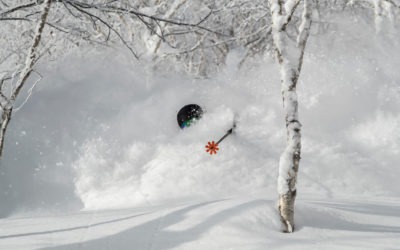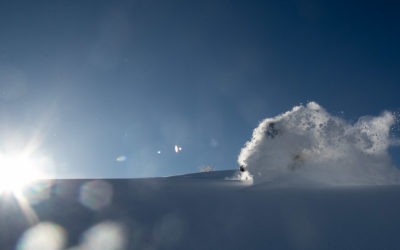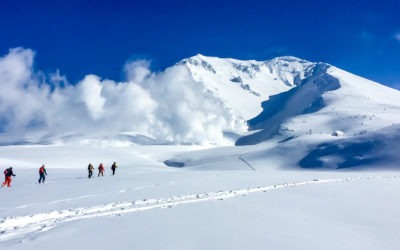How to Pack For an International Ski Trip
Engelberg History
The history of Engelberg dates back to the early 1100’s when a member of the Swiss aristocracy, Blessed Konrad, Count of Sellenbüeren, was lead to the valley with his Ox looking to lay his roots for a divine passage to Heaven by building a monastery. This monastery eventually became the Engelberg Abbey that one can still visit to this today. Upon arrival to the valley, he noticed a group of Cherubs on the summit of Hanen Mountain and happily named the area “Angels Mountain” which would eventually become “Engelberg”.
The Trubsee area had been used before this time for its resources but the birth of a new mountain village was born. Over the next few hundred years, Engelberg would be known through the country for the educational quality at the Benedictine monastery and as a major trade destination. In roughly 1850, the area became an international vacation resort. The healing properties of the fresh clean air, the altitude, and mineral springs quickly grew as a hotspot for Swiss and British tourist alike.
As Engelberg competed with the likes of St Moritz, Davos, and St Anton for a top winter destination, the area took its own path. Families like Hess, Odermatt, and Cattani where pioneers of tourism building some of the well known hotels that still stand in the valley- the Hotel Titlis and the Hotel Trubsee for mountaineers.
Around the late 1880’s the first hydroelectric plant was built bringing power to the famed resort well before Zurich. Shortly after, the longest running electric railway in the world was developed which marked another milestone for this small quiet mountain town. Generations later, one of the Hess family members built the first licensed aerial cableway in Switzerland, which spanned from Gerschnialp to Trübsee. The tramway continued to carry skiers until 1984. Truly incredible feats that not many resorts can match.

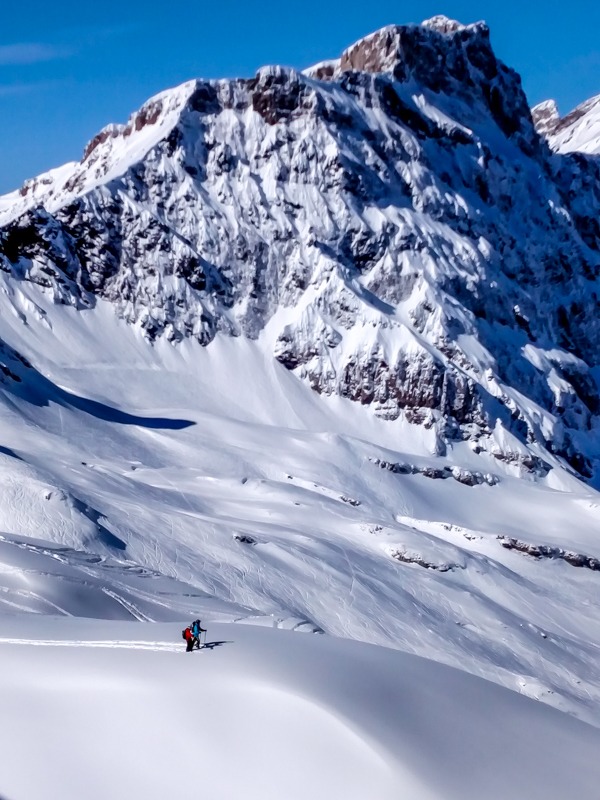



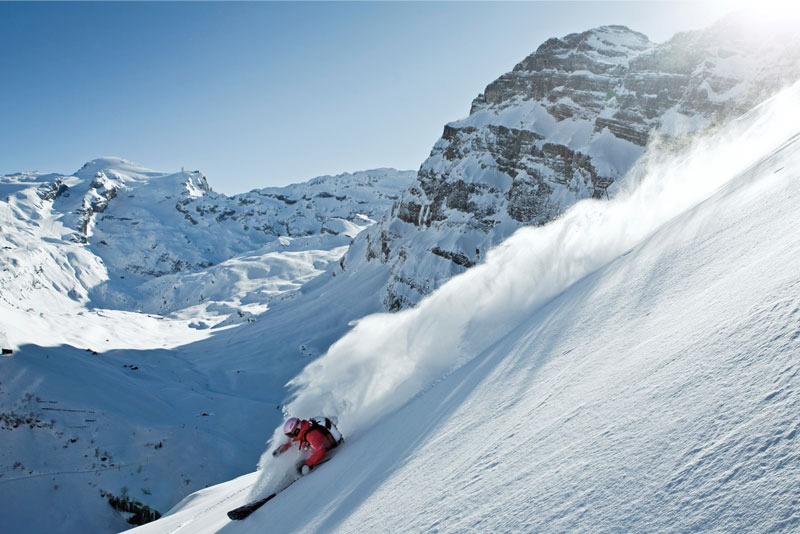
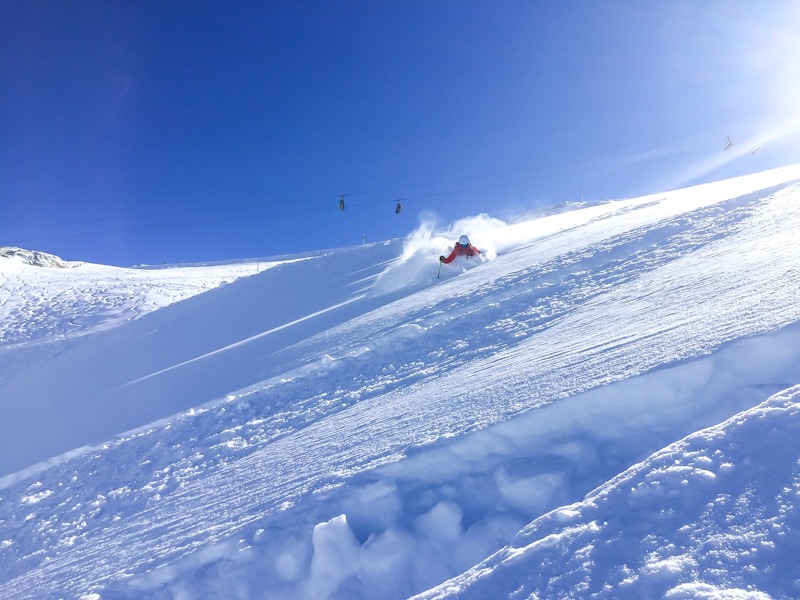
Freesking Movement
To many individuals in the country as well as avid skiers, we know Engelberg as The Swiss Freeride Mecca. Starting in the early 2000’s an insurgence of Swedish skiers descended upon this small mountain town. Over the next decade, pro skiers from all over the globe would travel to this resort located in the middle of Switzerland to find their own path amongst the big lines surrounding the area. Skiing Waste Deep Pow in Engelberg, Switzerland The draw of waist deep powder, big cliff lines, and long descents that burn the legs after thousands of vertical feet, have skiers from all over visiting this iconic location. From just over 10,000 feet, skiers of all abilities have an opportunity to ski some of the best runs of their lives. There are a handful of classic lines in the area (some we are keeping secret!) whose reputations precede them for good reason. Please note these lines are not for the everyday skier and we always recommend getting a local guide or going with a tour operator before choosing to descend one of these classic Swiss lines. Every skier should ski these at least once, actually as much as possible, and below is a list of the “Big 5” for you to daydream about.The Skiing
The Laub
A 3,900-vertical-foot slope of perfect powder turns that stands as the longest continuous lift-served powder field in Europe. When the Laub is open and safe to ski, this consistent 30-40 degree pitch is one of the best powder runs in the world. Its width spans several football fields which leaves enough room for everyone. A must do for every powder skier! A 3,900-vertical-foot slope of perfect powder turns that stands as the longest continuous lift-served powder field in Europe.The Sulz
Here you have the small, little and big variations that divide the area. A lot of skiers will start off on the small as it is easily accessible by the lift and you can spin multiple runs on it. There is a massive cliff wall on the traverse out and yes, people have jumped it. The middle section offers some of the best cliff lines in all of Europe. It could arguably be on par with some of the best in the world as the options are endless. There are also a number of epic lines that descend through this section and on a deep powder day, it could be one of the best runs of your life. The big section offers a lot of mellow skiing but don’t be fooled as there are a number of variations that can challenge every skier if you know where to go. Andermatt & Engelberg Switzerland Ski Tour – Le Grand Adventure ToursGaltiberg
This is the biggest of the big ones. Boasting 6500+ vertical feet of pure bliss, Galtiberg gives new meaning to “really long run”. At the start of the run you can go as fast as you dare over the open glacier fields. The majestic middle part descends between 500 meter high cliff walls towering above you that very few runs offer. The end of the run will have your legs screaming like never before but your inner skier is saying “Again!” – it’s a perfect run. The Galtiberg is not only a Big 5 in Engelberg; it’s a Big 5 in the world. Incredibly easy access mixed with an amazing diversity of terrain will make it one of the most memorable runs in your lifetime. There are some great places to have lunch at like the Restaurant Wasserfall, or if it’s your last run of the day head into town for an apres beer to celebrate one of the longest runs you will ever ski. The Galtiberg demands respect and you should hire a guide to be safe. This is one of the classic runs you will do on our Engelberg Freeride Tour and at the end of the day, it will be one to mark as an all time descent!Wendelücke
This is a run of dreams for most skiers. The area can be accessed off the lift but the real line comes from a 30-60 minute hike. From this point, it’s almost as good as it gets with close to 3,200+ Vertical foot descent to the valley. Make sure you have enough energy left in your legs as there is a 10 minute hike back up to the lift but it’s well worth it! This was one of the best runs I skied last year with one of our other tour guides, Andy Knouse, and let’s just say it was one of the best runs of 2016.Steinberg
The Steinberg is the massive off piste area you reach from the top of the Titlis Rotair, which lies at the top of the ski area just under 10,000 feet. The runs from here offer endless options for your descent to Trubsee. Some skiers choose to enter through the technical Gaff area, located on the far skier’s right side. Other options for steep lines are in the “Never Sun” area, situated on the skier’s left. Between these two options lies a wide rolling area that offers dozens of possibilities. From steep chutes to mellow powder fields, Steinberg has it all. You’ll never run out of options, but always take the appropriate safety precautions. Certain aspects of this run are like glacier skiing on steroids. Know your routes, and stay clear of the crevasses.Final Conclusion
Overall, Engelberg has a total of 24 lifts, 50+ miles of piste skiing, and 25 official trails. Given the resort boast 6,500 vertical feet of skiing, this is somewhat misleading until you actually ski the area. One trail alone is seven miles long (this can be a fun run at the end of the day but watch for the people!) and the backcountry options open up roughly 100,000 acres of accessible skiing with the proper gear for touring. Set an hour south of Zürich in the middle of Switzerland, this remarkable resort has remained largely undiscovered. Engelberg is a true gem with incredible hospitality, accommodations to meet the needs of every traveler, dozens of world class restaurants serving up local specialities, and an apres-nightlife scene that rivals the best of them. We are proud to offer an Engelberg Freeride Ski Trip that not only highlights the skiing but the history, culture and lifestyle of this special place. Once you visit this incredible area we are sure you will want to keep visiting every year!Sign up to Hear About our Newest Trips, Exclusive Offers and More.
YOU MAY ALSO LIKE:
Here’s What 3 Feet of Snow in 24 Hours Looks Like in Japan
Check out some highlights from the Image Quest Photo Camps with Le Grand Adventure Tours.
Image Quest Photo Ski Camp To Start a Career in Skiing
Make a living skiing, become a photographer for FREESKIER or a job with the Freeride World Tour.
Tips for Powder Skiing in Japan
A successful ski trip to Japan not only depends on conditions but having the right guides to take you there.

